|
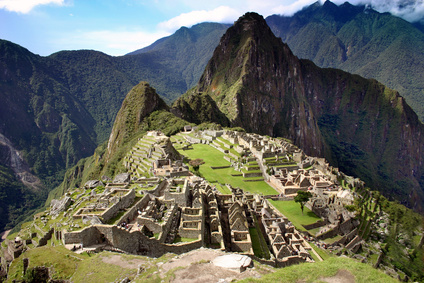 The Inca Empire was able to perform the most extraordinary architecture works that still can be appreciated from the large number of ruins left, all over the mountain system that surrounds the Citadel of Machu Picchu. Indescribable designs and great architectural organization were the main facts to make possible such an incredible city that was dividedin a number of sections. The Inca Empire was able to perform the most extraordinary architecture works that still can be appreciated from the large number of ruins left, all over the mountain system that surrounds the Citadel of Machu Picchu. Indescribable designs and great architectural organization were the main facts to make possible such an incredible city that was dividedin a number of sections.
|
|
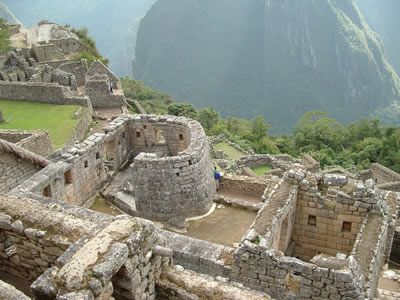 The Temple of the Sun is located in the urban sector and can be only entered through a large access gate, gate which was provided with double beams and a closure mechanism to provide the city with the necessary means of protection and security. The exact location of the Citadel was chosen to place the city at the highest altitude and, thus, this location in turn get to contemplate heaven more closely. The Temple of the Sun is located in the urban sector and can be only entered through a large access gate, gate which was provided with double beams and a closure mechanism to provide the city with the necessary means of protection and security. The exact location of the Citadel was chosen to place the city at the highest altitude and, thus, this location in turn get to contemplate heaven more closely.
|
|
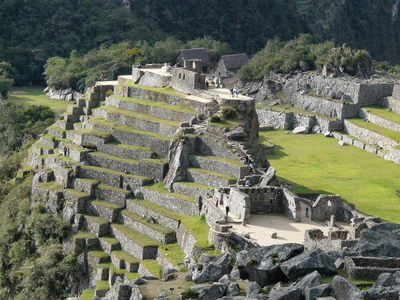 This incredible pyramid building is located in the Hanan sector of the urban area. The exact location of the pyramid of Intiwuatana is situated on the slopes of one of the hills and that is why it was designed to take a pyramidal shape. This was possible after turning the skirts of the hill into level embankments forming a structuring of terraces and runners on a polygonal basis which takes the appearance of a pyramid. This incredible pyramid building is located in the Hanan sector of the urban area. The exact location of the pyramid of Intiwuatana is situated on the slopes of one of the hills and that is why it was designed to take a pyramidal shape. This was possible after turning the skirts of the hill into level embankments forming a structuring of terraces and runners on a polygonal basis which takes the appearance of a pyramid.
|
|
 This magnificent building has received many names throughout history, due to the large number of anthropology studies that have been identifying the different construction elements and buildings of the entire city of Machu Picchu. The "street of the fountains ", "staircase of the fountains" or, mostly known as "liturgical fountains", are some of the names for this group of water tanks or pools that were named by the Inca civilization as "paqchas". This magnificent building has received many names throughout history, due to the large number of anthropology studies that have been identifying the different construction elements and buildings of the entire city of Machu Picchu. The "street of the fountains ", "staircase of the fountains" or, mostly known as "liturgical fountains", are some of the names for this group of water tanks or pools that were named by the Inca civilization as "paqchas".
|
|
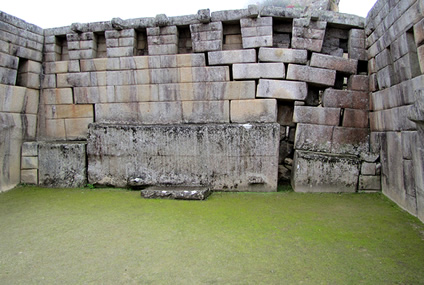 Located at the highest position of the city, to the northfrom the set of buildings forming around a House designated as yard called "Sacred Plaza", the main temple or temple Mayor of Machu Picchu stands at this location as one of the two buildings with greater spiritual meaning to the Citadel. This square picks up the two most important temples of this city: the Temple of the three Windows and the main Temple of Machu Picchu. Located at the highest position of the city, to the northfrom the set of buildings forming around a House designated as yard called "Sacred Plaza", the main temple or temple Mayor of Machu Picchu stands at this location as one of the two buildings with greater spiritual meaning to the Citadel. This square picks up the two most important temples of this city: the Temple of the three Windows and the main Temple of Machu Picchu.
|
|
 Although this building is not located exactly on the sacred Plaza it is however of great importance and is closely tied to the sacred meaning that this site had to the Citadel of Machu Picchu. The sacred Plaza houses the most important buildings to this civilization, whereas from the spiritual and religious point of view, which are the two most important temples of this city: the Temple of the three Windows and the main temple. Although this building is not located exactly on the sacred Plaza it is however of great importance and is closely tied to the sacred meaning that this site had to the Citadel of Machu Picchu. The sacred Plaza houses the most important buildings to this civilization, whereas from the spiritual and religious point of view, which are the two most important temples of this city: the Temple of the three Windows and the main temple.
|
|
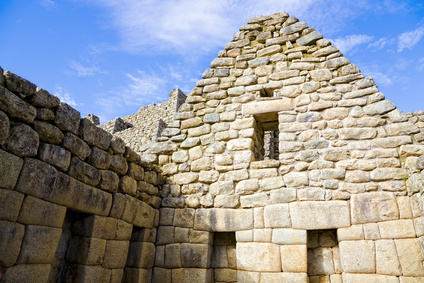 The complex structure of the Incan society defined several classes that even influenced the high aristocratic areas. That is why not all the members of the nobility possessed the same privileges, because these distinctions were awarded according to the lineage. The Royal Ayllus therefore representing the nobility of blood which would be thus constituted by the direct descendants of the King and that they were called Panacas. The complex structure of the Incan society defined several classes that even influenced the high aristocratic areas. That is why not all the members of the nobility possessed the same privileges, because these distinctions were awarded according to the lineage. The Royal Ayllus therefore representing the nobility of blood which would be thus constituted by the direct descendants of the King and that they were called Panacas.
|
|
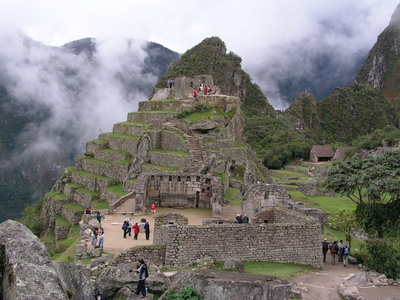 The Sacred Plaza has been designated as the political center of the urban sector. It is surrounded, or better said, consisting of the main temple, the sacred Temple of the Three Windows and the Intihuatana (religious symbol represented by a carved Aerolite in solid rock), although also sits to the House of the priest and the sacred Temple of the Moon. The Sacred Plaza has been designated as the political center of the urban sector. It is surrounded, or better said, consisting of the main temple, the sacred Temple of the Three Windows and the Intihuatana (religious symbol represented by a carved Aerolite in solid rock), although also sits to the House of the priest and the sacred Temple of the Moon.
|
|
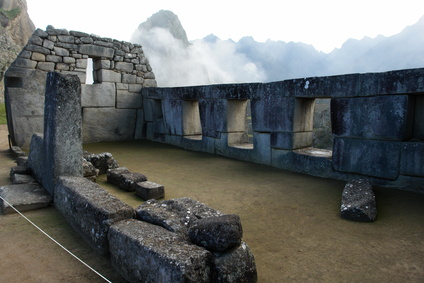 The Temple of the Three Windows is one of the foundations with the longest history in the sacred lost city of Machu Picchu. According to the native indigenous folklore, the city was build up with the purpose to hide the Inca civilization from the Spanish conquerors, and this location was without a doubt more than ideal for such shelter. This Temple held a great spiritual value for the civilization but also has a very important historical meaning. The Temple of the Three Windows is one of the foundations with the longest history in the sacred lost city of Machu Picchu. According to the native indigenous folklore, the city was build up with the purpose to hide the Inca civilization from the Spanish conquerors, and this location was without a doubt more than ideal for such shelter. This Temple held a great spiritual value for the civilization but also has a very important historical meaning.
|
|
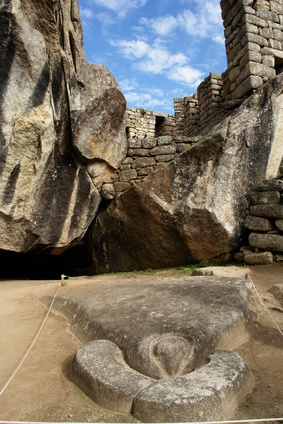 Extraordinary beauty that resides in Machu Picchu can be seen both in its ruins in the Valley as well as in their wonderful adjoining places that offer the unique flora and fauna of this valley of the Andes located in Machu Picchu and Huayna Picchu mountain systems. The impressive air show that offers one of the indigenous wonders of these places, the Condor, a symbol sacred to the Inca civilization which granted the status of King de los Andes can be seen from any location of Machu Picchu. Extraordinary beauty that resides in Machu Picchu can be seen both in its ruins in the Valley as well as in their wonderful adjoining places that offer the unique flora and fauna of this valley of the Andes located in Machu Picchu and Huayna Picchu mountain systems. The impressive air show that offers one of the indigenous wonders of these places, the Condor, a symbol sacred to the Inca civilization which granted the status of King de los Andes can be seen from any location of Machu Picchu.
|
|
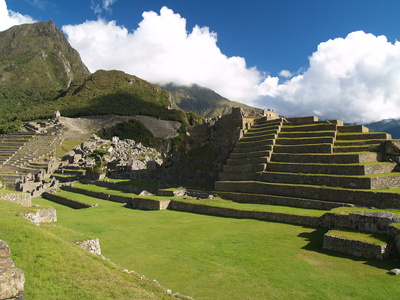 For the Inca civilization, and especially during the time that the city of Machu Picchu was the most important place as Sanctuary of the Inca aristocratic class, the Congregation of its inhabitants in the numerous events, mostly rituals and celebrations worshipping sacred Inca gods, as it had a very important and momentous significance for the Incan society. All these celebrations ramifications in centers planned for the host to hundreds of citizens who saw the cult of their deities as well made. For the Inca civilization, and especially during the time that the city of Machu Picchu was the most important place as Sanctuary of the Inca aristocratic class, the Congregation of its inhabitants in the numerous events, mostly rituals and celebrations worshipping sacred Inca gods, as it had a very important and momentous significance for the Incan society. All these celebrations ramifications in centers planned for the host to hundreds of citizens who saw the cult of their deities as well made.
|
|
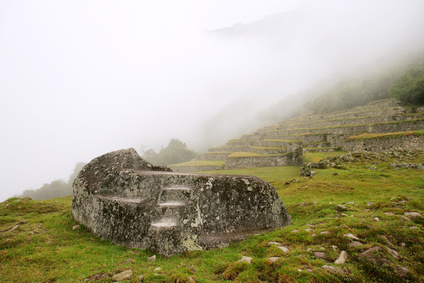 The Inca civilization, as one of the most advanced civilizations in the history, shows us today its amazing progress and development in each and every corner of the Citadel of Machu Picchu. The civilization has been well known for their number of different deities that the city would worship its Gods through celebrations, sacred rituals and human sacrifices. The Inca civilization, as one of the most advanced civilizations in the history, shows us today its amazing progress and development in each and every corner of the Citadel of Machu Picchu. The civilization has been well known for their number of different deities that the city would worship its Gods through celebrations, sacred rituals and human sacrifices.
|











